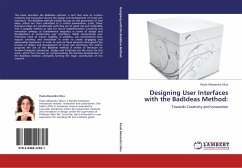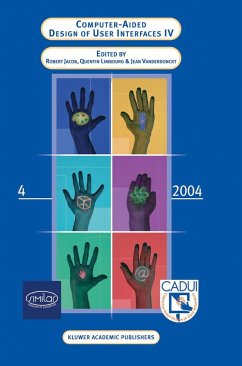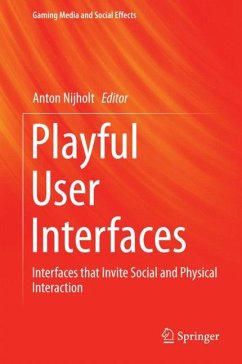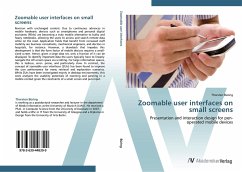
Designing Motivational User Interfaces
Balancing Effective and Affective User Interface Design to Motivate Call Centre Advisors
Versandkostenfrei!
Versandfertig in 6-10 Tagen
52,99 €
inkl. MwSt.

PAYBACK Punkte
26 °P sammeln!
Motivational User Interfaces (MUIs) fuse motivational and persuasive psychology with user interface design. MUIs were developed specifically for call centres, an industry which suffers high levels of employee burnout and churn. They were designed to reflect the balance between effect (delivering service) and affect (managing emotion). MUIs were designed using a framework of motivators taken from both psychology and user needs. This included capturing what motivates users in their job and why they choose to use technologies. This book describes the evolution of the MUI through three case studie...
Motivational User Interfaces (MUIs) fuse
motivational and persuasive psychology with user
interface design. MUIs were developed specifically
for call centres, an industry which suffers high
levels of employee burnout and churn. They were
designed to reflect the balance between effect
(delivering service) and affect (managing emotion).
MUIs were designed using a framework of motivators
taken from both psychology and user needs. This
included capturing what motivates users in their job
and why they choose to use technologies.
This book describes the evolution of the MUI through
three case studies. The first MUI was developed as a
concept demonstrator for a telecommunications call
centre. The second was created for a high street
bank as a design specification for their future call
centre vision. The third addressed problems with
technology acceptance of a knowledge management
system in a telecommunications call centre and
illustrated how design could be used to help
increase levels of technology acceptance. These
designs demonstrated how MUIs could be used to help
motivate call centre advisors and increase
technology acceptance.
motivational and persuasive psychology with user
interface design. MUIs were developed specifically
for call centres, an industry which suffers high
levels of employee burnout and churn. They were
designed to reflect the balance between effect
(delivering service) and affect (managing emotion).
MUIs were designed using a framework of motivators
taken from both psychology and user needs. This
included capturing what motivates users in their job
and why they choose to use technologies.
This book describes the evolution of the MUI through
three case studies. The first MUI was developed as a
concept demonstrator for a telecommunications call
centre. The second was created for a high street
bank as a design specification for their future call
centre vision. The third addressed problems with
technology acceptance of a knowledge management
system in a telecommunications call centre and
illustrated how design could be used to help
increase levels of technology acceptance. These
designs demonstrated how MUIs could be used to help
motivate call centre advisors and increase
technology acceptance.












